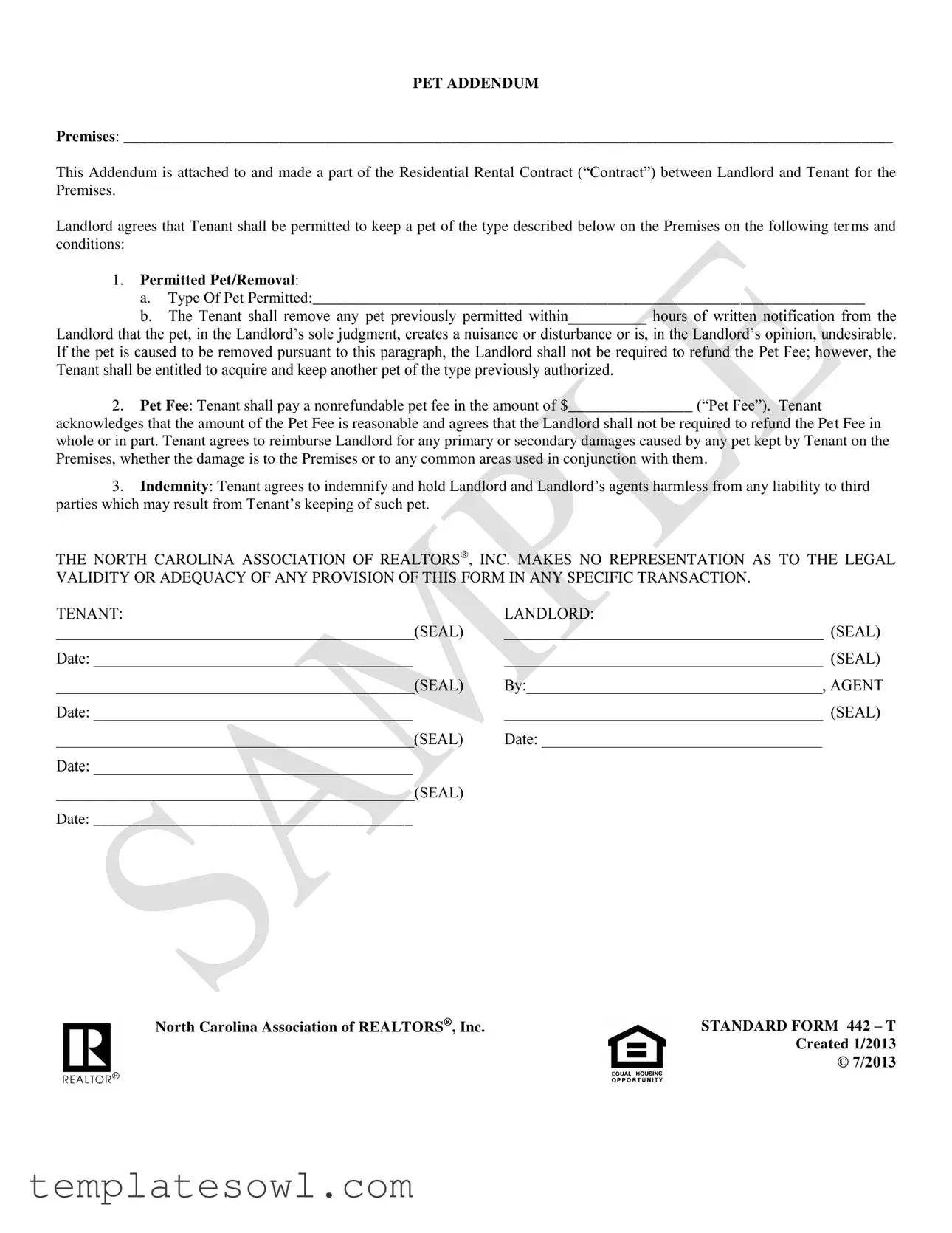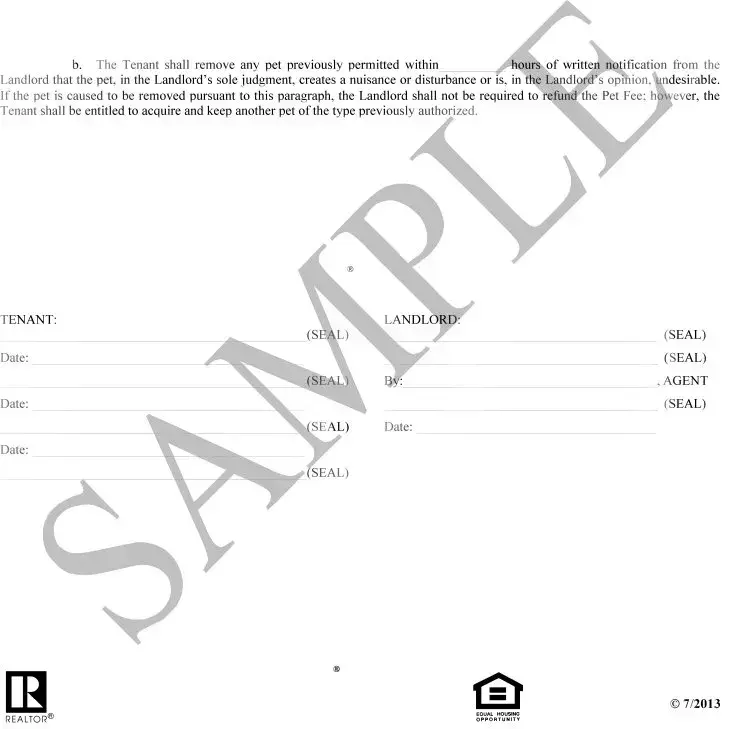What is the purpose of the 442 T form?
The 442 T form, also known as the Pet Addendum, is attached to the Residential Rental Contract between a landlord and a tenant. It outlines the terms and conditions under which a tenant may keep a pet on the rental premises, ensuring both parties understand their responsibilities and obligations regarding pet ownership.
What details do I need to provide about my pet on the 442 T form?
The form requires tenants to specify the type of pet they wish to keep. This includes filling in details about the particular species, breed, and any other relevant information that may be necessary for consideration by the landlord.
Is there a pet fee associated with the 442 T form?
Yes, the form stipulates that tenants must pay a nonrefundable pet fee. This fee is determined by the landlord and needs to be specified on the form. It is important for tenants to acknowledge that this fee is not subject to refund, regardless of any circumstances that may arise during the rental period.
What happens if my pet causes damage to the property?
Tenants are required to reimburse the landlord for any damages caused by their pet, whether the damages occur in the rental unit or in any common areas. This underscores the necessity for tenants to take responsibility for their pets’ actions and the impact those actions may have on the property.
What does indemnity mean in the context of the 442 T form?
Indemnity in this form signifies that the tenant agrees to protect the landlord and their agents from any legal liability or claims made by third parties resulting from the tenant's pet. This provision ensures that landlords are not held responsible for incidents caused by the tenant's pet.
Does the North Carolina Association of Realtors endorse the form's provisions?
The North Carolina Association of Realtors does not guarantee the legal validity or adequacy of any provision within the 442 T form for a specific transaction. Tenants and landlords should consult legal professionals if they have concerns regarding the form's implications.
When should the 442 T form be completed?
The form should be completed and signed in conjunction with the leasing agreement, ideally before the tenant moves in with their pet. This ensures that all parties are aware of the pet policy and agree to its terms prior to the commencement of the rental period.
Can the terms in the 442 T form be modified?
Any modifications to the terms outlined in the 442 T form should be discussed and agreed upon by both the tenant and landlord. Any changes should be documented in writing to ensure clarity and mutual understanding between all parties involved.

